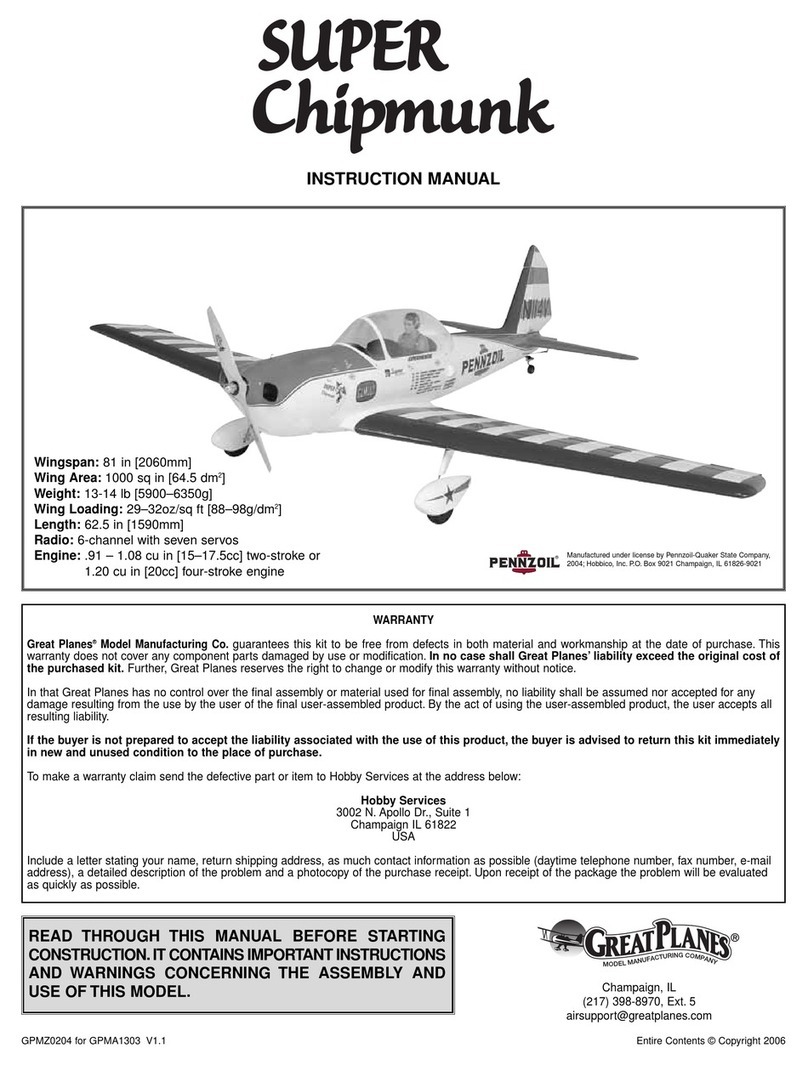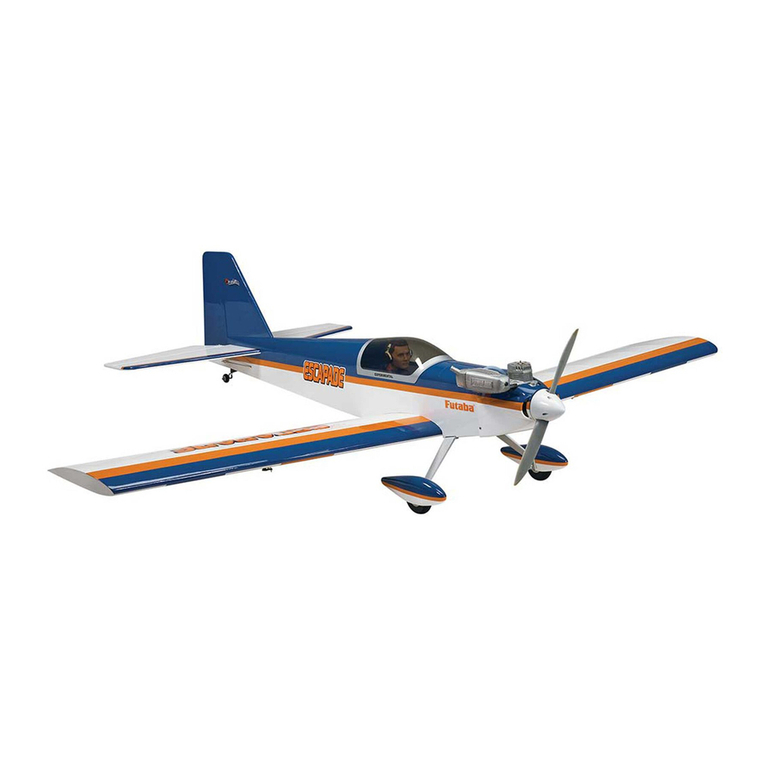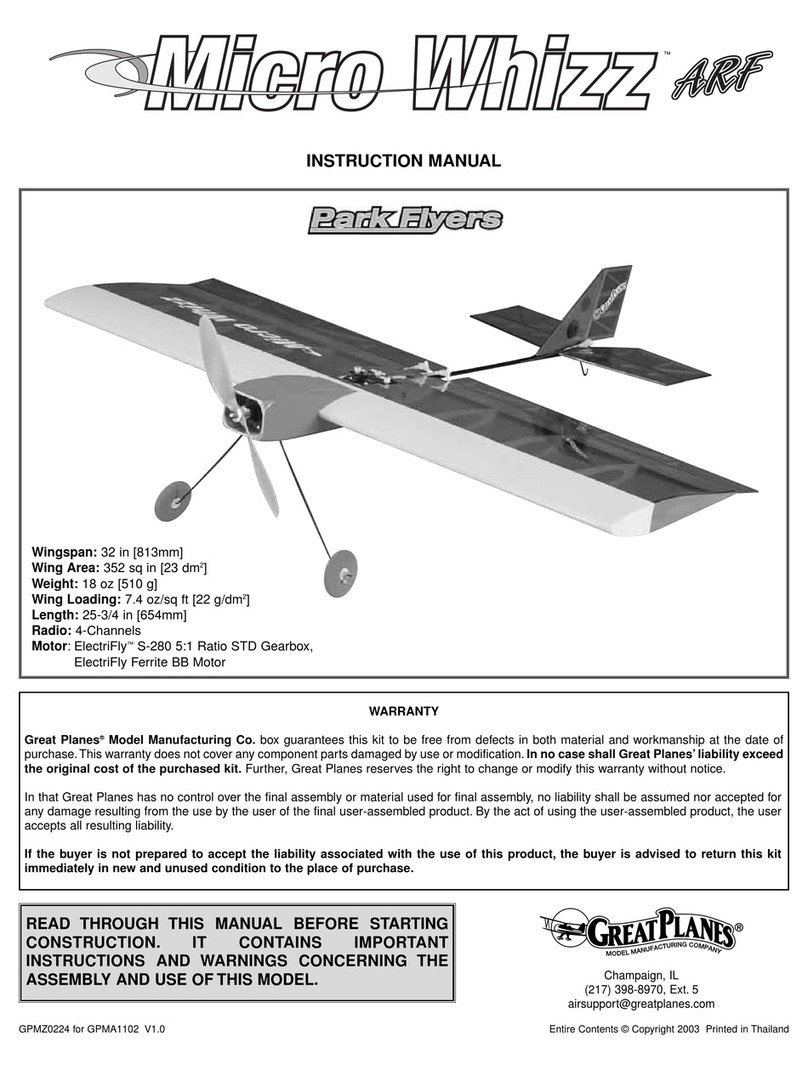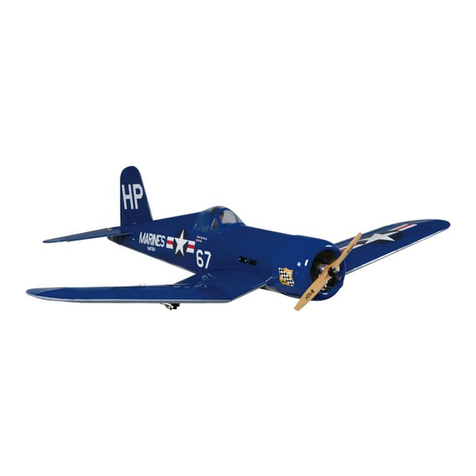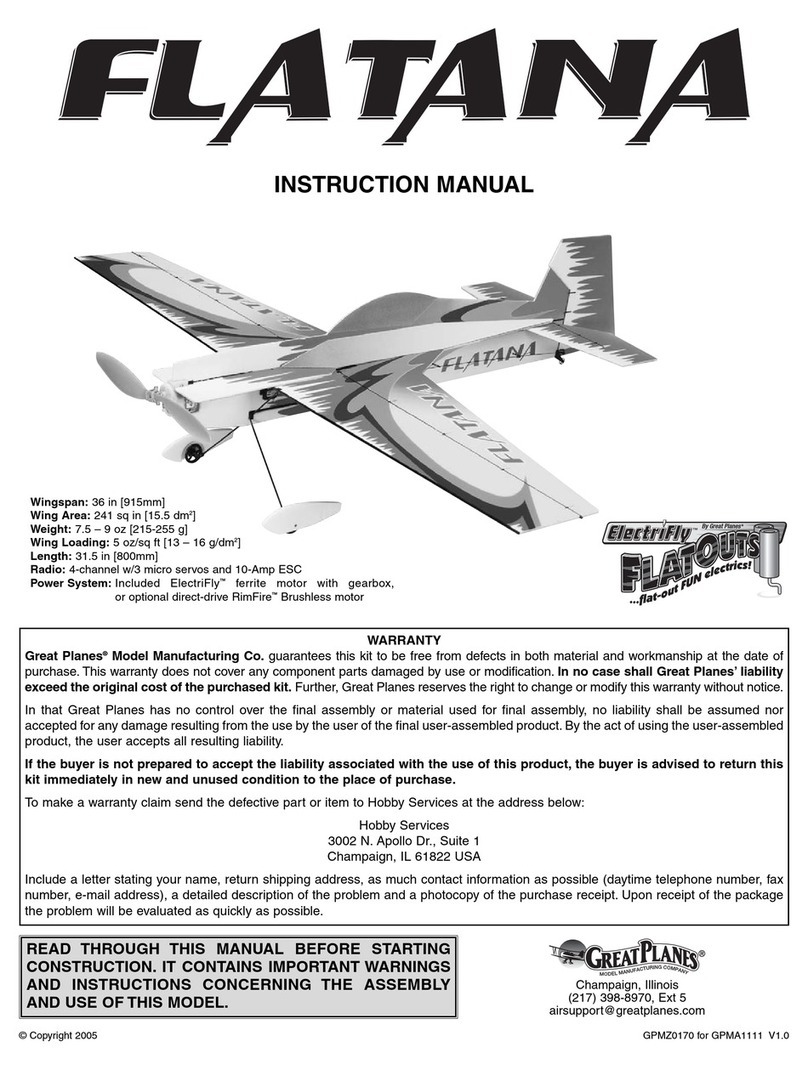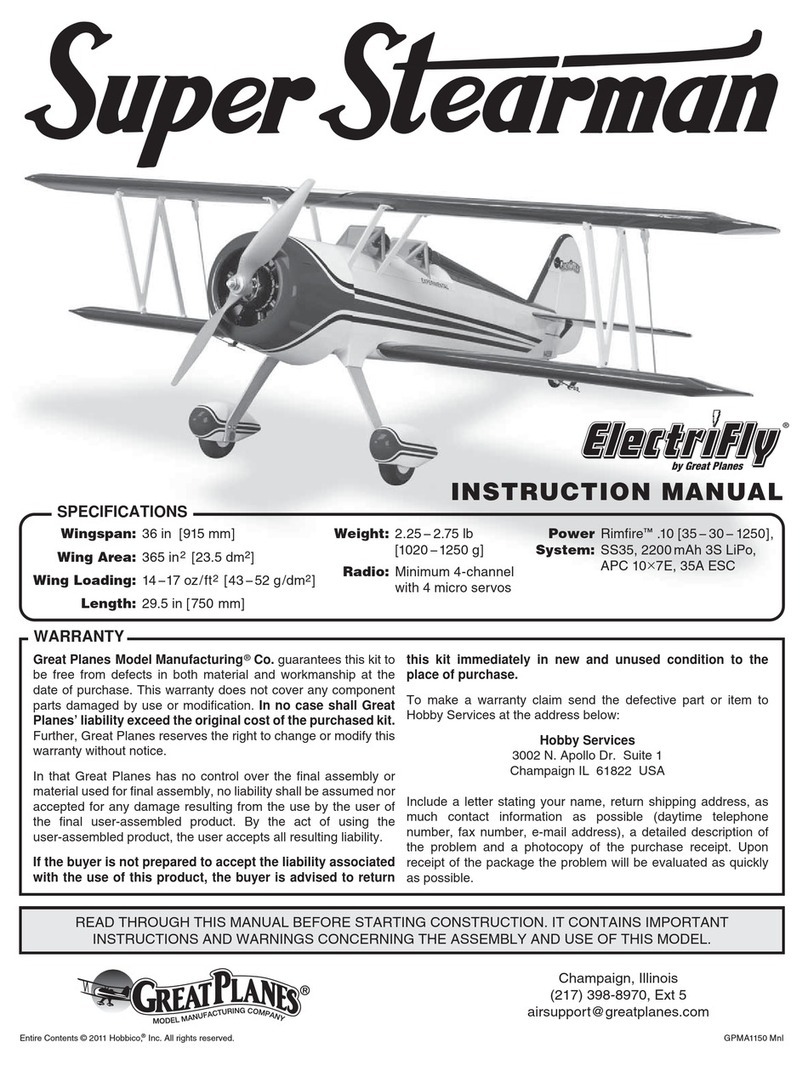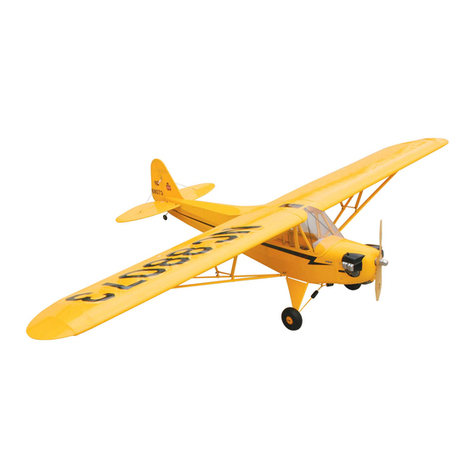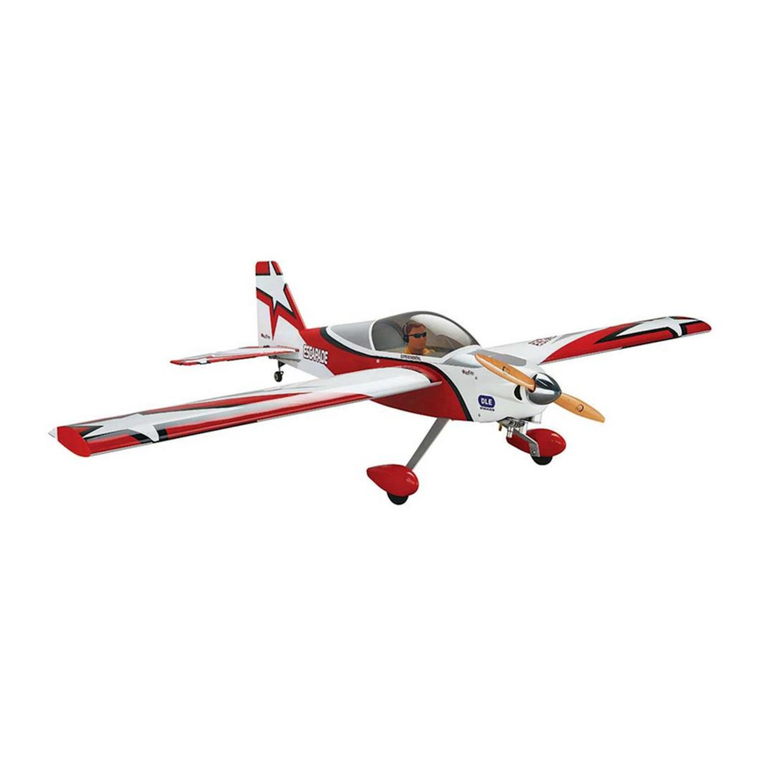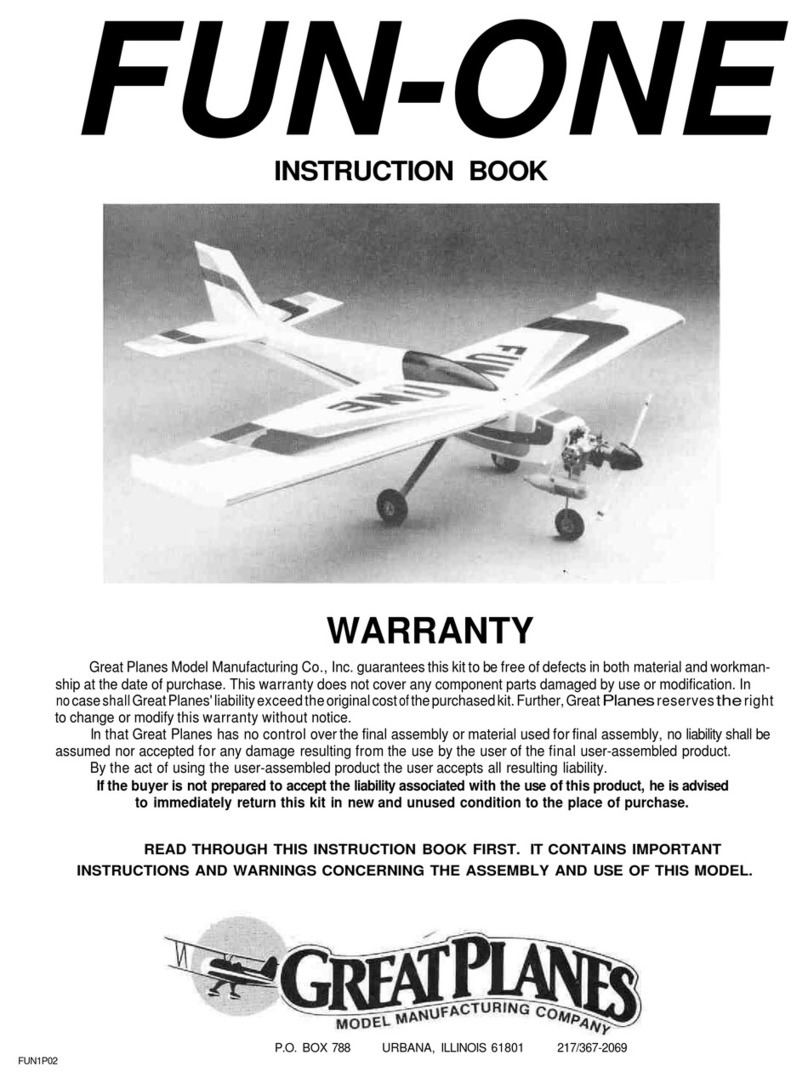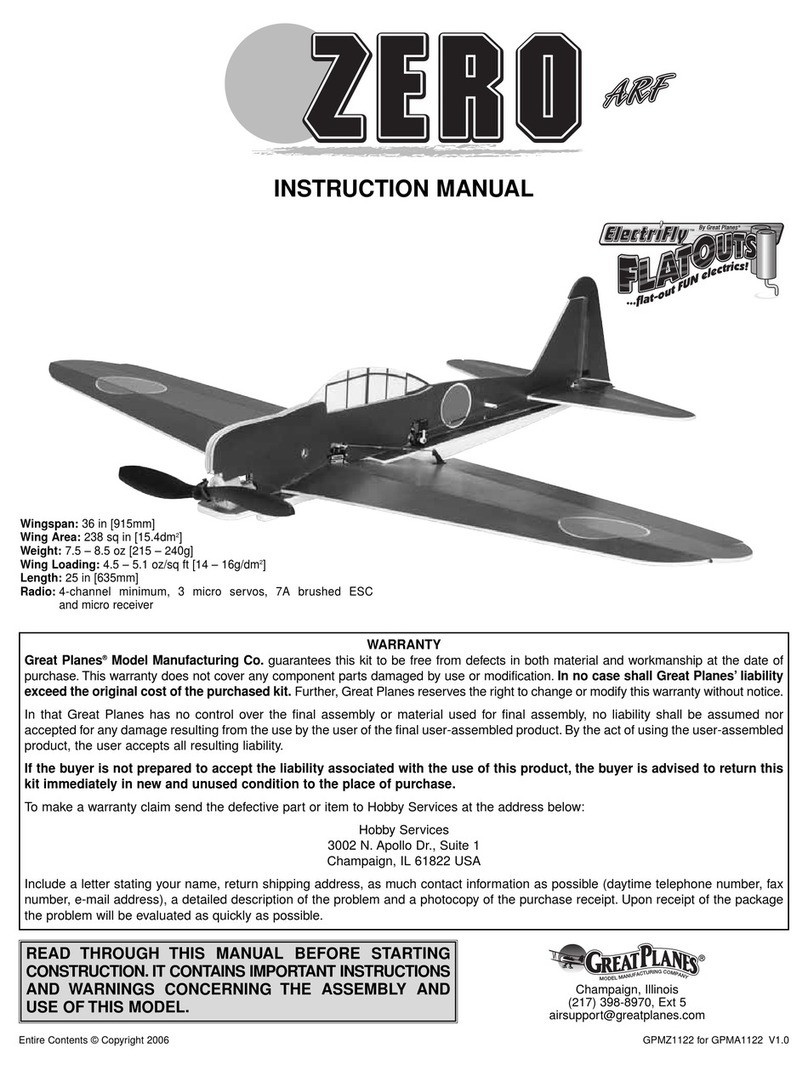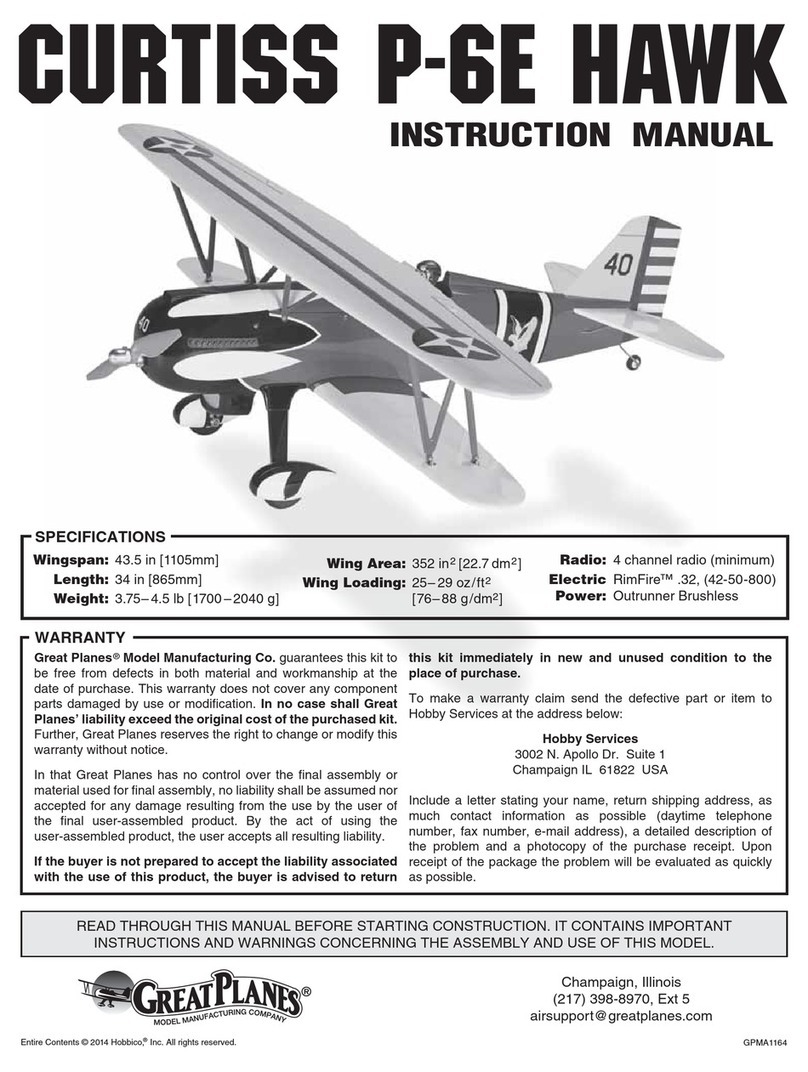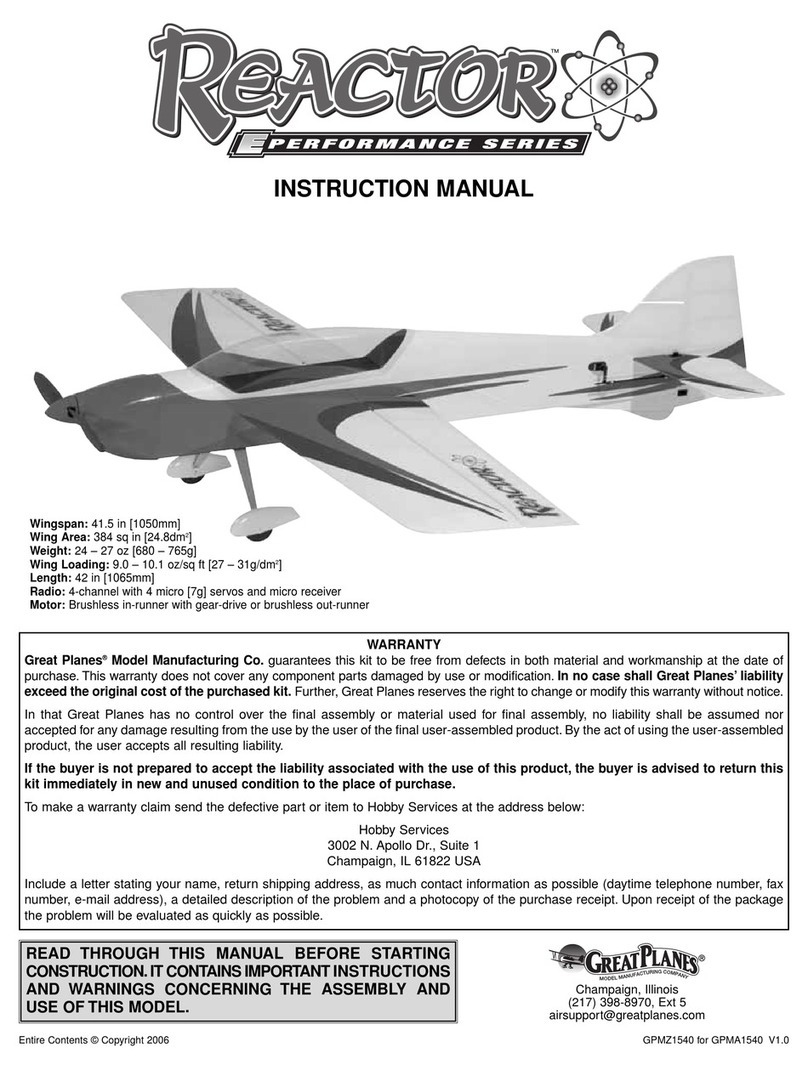
2
TABLE OF CONTENTS
INTRODUCTION...............................................................2
AMA ..................................................................................2
SAFETY PRECAUTIONS .................................................2
LITHIUM BATTERY HANDLING & USAGE .....................3
DECISIONSYOU MUST MAKE........................................3
Radio Equipment..........................................................3
Motor, Propeller, Battery & ESC Recommendations.......3
ADDITIONAL ITEMS REQUIRED ....................................4
Required Hardware & Accessories..............................4
Optional Supplies & Tools ............................................4
IMPORTANT BUILDING NOTES......................................4
KIT INSPECTION..............................................................5
KIT CONTENTS................................................................5
METRIC/INCH RULER......................................................5
GETTING STARTED.........................................................6
WING INSTALLATION......................................................6
Install the Wings...........................................................6
Link the Ailerons...........................................................7
HORIZONTAL & VERTICAL TAIL INSTALLATION..........8
Install the Horizontal Stabilizer.....................................8
Hinge the Rudder.........................................................9
INSTALL THE SERVOS ..................................................10
PUSHROD & CONTROL HORN INSTALLATION..........10
Install the Control Horns ............................................10
Install the Pushrods....................................................11
MOTOR & ESC INSTALLATION.....................................12
FINAL ASSEMBLY .........................................................13
Install the Wing Braces...............................................13
Install the Aileron Servo.............................................14
Install the Radio, Landing Gear, & Propeller..............15
BALANCETHE MODEL (C.G.) ......................................17
Set the C.G.................................................................17
Balance the Model Laterally.......................................17
SETTHE CONTROLTHROWS & DIRECTION
OFTRAVEL.....................................................................18
Check the Control Directions .....................................18
Set the Control Throws...............................................18
PREFLIGHT....................................................................18
IdentifyYour Model.....................................................18
Charge the Batteries..................................................19
Balance Propellers.....................................................19
Ground Check & Range Check..................................19
MOTOR SAFETY PRECAUTIONS .................................19
AMA SAFETY CODE (excerpts)....................................19
CHECK LIST...................................................................20
FLYING............................................................................20
Takeoff........................................................................21
Flight ..........................................................................21
Landing ......................................................................21
TEMPLATES........................................... Back Cover Page
INTRODUCTION
For the latest technical updates or manual corrections
to the Pluma 3D ARF visit the Great Planes web site at
www.greatplanes.com. Open the “Airplanes” link and then
selectthePluma3DARF.Ifthereisnewtechnicalinformation
or changes to this model a “tech notice” box will appear in
the upper left corner of the page.
AMA
If you are not already a member of the AMA, please join!
The AMA is the governing body of model aviation and
membership provides liability insurance coverage, protects
modelers’ rights and interests and is required to fly at most
R/C sites.
Academy of Model Aeronautics
5151 East Memorial Drive
Muncie, IN 47302-9252
Tele. (800) 435-9262
Fax (765) 741-0057
Or via the Internet at:
http://www.modelaircraft.org
IMPORTANT!!!Two of the most important things you can do
to preserve the radio controlled aircraft hobby are to avoid
flying near full-scale aircraft and avoid flying near or over
groups of people.
PROTECTYOUR MODEL,YOURSELF
& OTHERS....FOLLOWTHESE
IMPORTANT SAFETY PRECAUTIONS
1.Your Pluma 3D ARF should not be considered a toy, but
rather a sophisticated, working model that functions very
much like a full-size airplane. Because of its performance
capabilities, the Pluma 3D ARF, if not assembled and
operated correctly, could possibly cause injury to yourself or
spectators and damage to property.
2.Youmustassemblethemodelaccordingtotheinstructions.
Do not alter or modify the model, as doing so may result in an
unsafe or unflyable model. In a few cases the instructions may
differ slightly from the photos. In those instances the written
instructions should be considered as correct.
3.You must take time to build straight, true and strong.
4. You must use an R/C radio system that is in first-class
condition, and a correctly sized motor and components
throughout the building process.
5.You must correctly install all R/C and other components so
that the model operates correctly on the ground and in the air.
